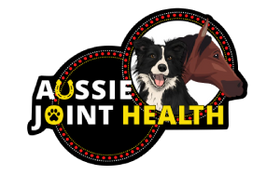Canine Joint Health
Canine Osteoarthritis
Osteoarthritis is a degenerative disease that affects the synovial joint, synovial fluid, cartilage, and bone. One in five dogs will experience arthritis in their lifetime. It usually starts slowly, causing inflammation in the joints, then progressively causing the cartilage and joint fluid to break down. When this occurs, it causes bone-on-bone rubbing.
There are three different types of joints
Fibrous
Cartilaginous
Synovial
There are four stages of Osteoarthritis
Stage 1
Minor bone spurs start to develop
Cartilage breakdown begins
Cartilage lesions can occur, causing friction, inflammation, and pain
Stage 2 (Mild)
Erosion of the bone due to cartilage lesions
More bone spur growth
Natural proteoglycan loss of the articular cartilage
Stage 3 (Moderate)
Thinning of cartilage between the bones
Narrowing the space between the bones
Stage 4 (Severe)
Joint space dramatically reduced
Cartilage loss is almost gone
Reduced joint mobility
Recognize The Symptoms Of Canine Arthritis.
Early detection can be the key to further damage and treatment of osteoarthritis.
Treatment of canine osteoarthritis
There are numerous treatments available for managing osteoarthritis.
Prescribed pharmaceutical drugs
Experimental treatment
Nutraceutical supplements (Canine Joint Plus)
Changes in lifestyle, such as weight loss and physical exercise, can also be beneficial.
Dogs that are overweight are at risk of:
Diabetes
Joint Conditions
Heart Disease
Mobility Issues
Early Death
Overfeeding your dog can be harmful. Make sure your dog's weight is appropriate for its age and breed by talking to your vet. Try to implement a healthy diet and foods that can reduce arthritis. Always keep in mind that there are foods for everyday use and foods for special treats. Your dog's joints can become overloaded if it's overweight. Being overweight can negatively affect their general health and aggravate their pain.
Some foods may help reduce joint inflammation, and others may aggravate arthritis symptoms.
The consumption of carbohydrates such as grains, wheat, rice, and corn may contribute to weight gain. A flare-up of arthritis may be caused by eggplant, peppers, and white potatoes. It has been suggested that salmon and sardines contain omega-3, which may function as an anti-inflammatory.There are other joint conditions that your dog may be experiencing, such as:
Hip Dysplasia
Genetic factors contribute to hip dysplasia, but environmental factors may also influence it. Research involving fast running, repetitive activities, overexertion, injuries, and being overweight early may have contributed to hip dysplasia. Until a puppy reaches the age of 18-24 months, its bones and joints are still developing. In dogs, neutering too early in their development may increase their chances of developing hip dysplasia.
DISCLAIMER
All information on the Aussie Joint Health website is for educational purposes only. No diagnosis or treatment is intended for individual animals in the Aussie Joint Health content. You must address any questions or concerns you may have about your animal with your veterinarian. The information provided on Aussie Joint Health should not replace your relationship with your veterinarian. This blog post is intended to help you have a better conversation with your veterinarian about the appropriate treatments to use for your pet.

